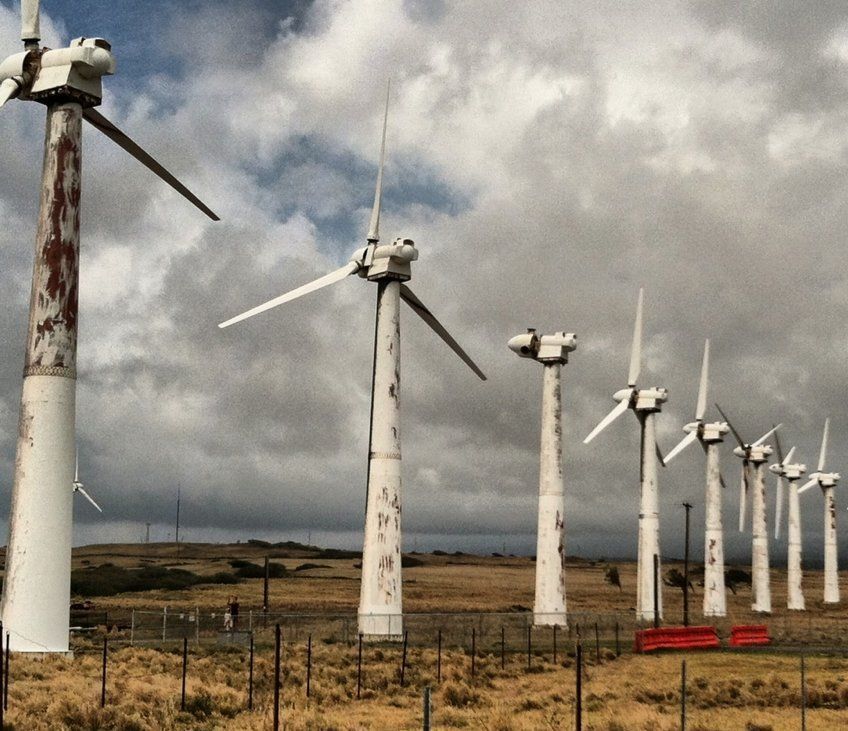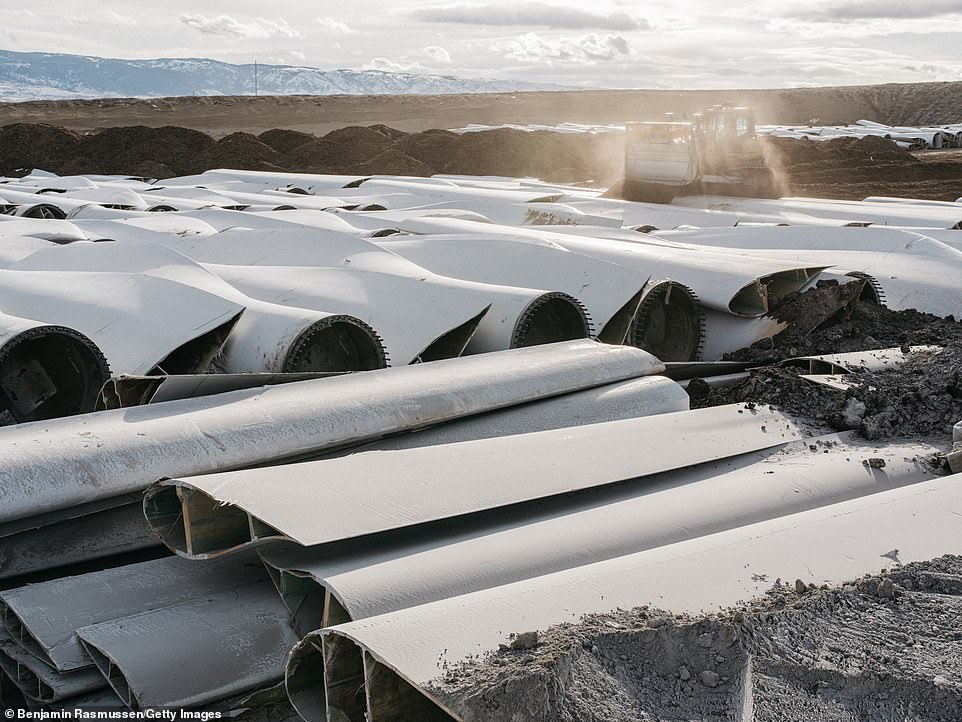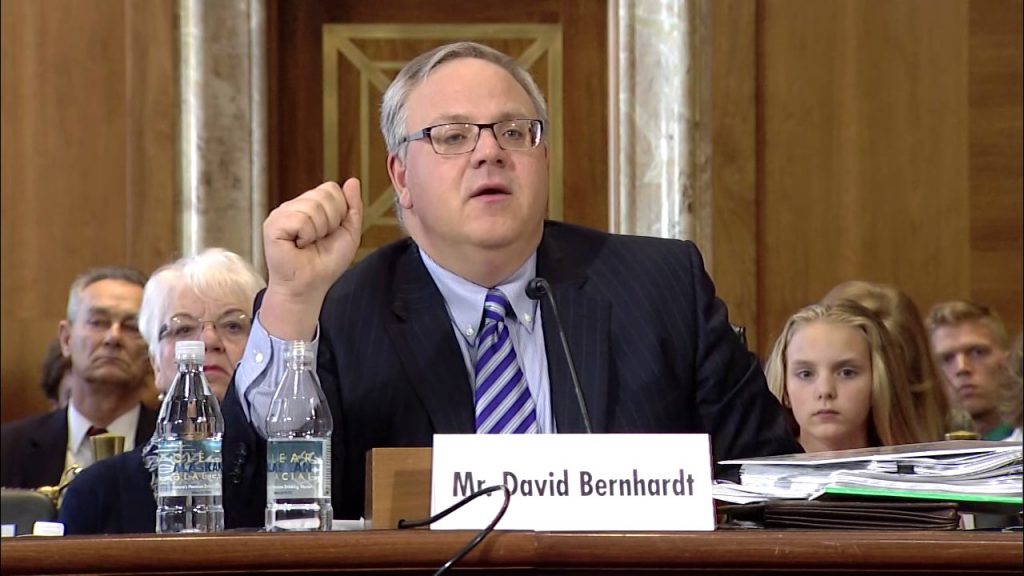The sheer size of the windmills and the difficulty of disposing of them at recycling stations led the agency to conclude that each new wind farm is a “towering promise of future wreckage.”
Amy Joi O’Donoghue
The dark side of ‘green energy’ and its threat to the nation’s environment
What happens to old solar panels, windmills and high tech batteries?
Wind farms and massive arrays of solar panels are cropping up across public and private landscapes both in the United States and abroad as users increasingly turn to “green energy” as their preferred flavor of electricity.
President Joe Biden, in fact, has directed the Interior Department to identify suitable places to host 20 gigawatts of new energy from sun, wind or geothermal resources by 2024 as part of a sweeping effort to move away from a carbon-based economy and electrical grid.
But how green is green?
Although countries are feverishly looking to install wind and solar farms to wean themselves off carbon-based, or so-called “dirty” energy, few countries, operators and the industry itself have yet to fully tackle the long-term consequences of how to dispose of these systems, which have their own environmental hazards like toxic metals, oil, fiberglass and other material.
A briefing paper released by the U.S. Environmental Protection Agency predicts these startling global numbers for countries by 2050 just for solar waste:
•United States, 10 million tons.
•Germany, 3 million tons.
•China, 20 million tons.
•Japan, 7.5 million tons.
•India, 7.5 million tons.
Solar arrays have a life cycle of about 30 years, but the rapid adoption of solar in the United States and elsewhere has the problem of disposal creeping up in the rearview mirror — faster rather than later.
Green waste growth
In 2019, according to the Solar Energy Industries Association, the United States surpassed 2 million solar installations, just three years after it hit the milestone of 1 million installations.
The paper points out that the growth of solar waste is already straining recycling and disposal capabilities, with some panels improperly ending up in municipal landfills or stacking up in warehouses while the wait continues for more inexpensive routes to recycling.
Research underscores there are few incentives to recycle solar panels, as the cost of recovering the materials outweighs the costs of extracting what can be recycled — even without adding in transportation expenses.
The issue foreshadows the potential for the creation of a new class of hazardous waste sites under EPA Superfund designations as clean energy operators walk away from a large volume of materials that contaminate the soil and groundwater.
“It is foreseeable that the same kind of practices could occur with respect to (solar) panels in the absence of very effective programs for the collecting and recycling of PV panels available where PV panels are used,” the paper said.
The problem is not limited to large-scale solar utility farms but also to individual households and businesses that over the years have opted to install rooftop solar panels.
“More homeowners are installing solar panels as they have become cheaper, but those modules have less potential for recycling and recovery of materials due to their smaller size and lower number of panels versus commercial installation,” the paper noted.
The disposal of hazardous waste is regulated and monitored under Utah law, and landfill operators are trained on what material to look for that poses potential threats to the environment, said Brian Speer, solid waste manager for the Utah Department of Environmental Quality.
“Certainly these wastes are on our radar, but we are currently not seeing a demand to dispose of these wastes in any significant quantity,” he said.
Cost hiccups
The solar industry is looking to use fewer precious metals and other elements in the manufacturing process, decreasing the amount of silver in panels by 70% since 2010.
While using less silver is economically attractive up front and less labor intensive, it makes recycling the solar panels less attractive. The cost decrease in the panels themselves has the potential to backfire, the paper warns, and some of these newer panels are more fragile and likely to break, hastening the need for their disposal.
The report notes that “not much has been done in the United States to address the PV waste issue,” and most novel policies in this arena are emerging from Europe.
In 2017, the state of Washington became the first in the nation to require recycling for these systems and to mandate a “take back” program for manufacturers at no cost to the homeowner. Utah, at this point, does not have such a mandate and it remains to be seen how effective the law will be. The EPA notes that such a law still does not address issue of where the waste winds up.

Tilting at windmills
Wind power also is taking off as a clean energy resource, but the EPA notes that windmills are the least energy producing and most physically difficult renewable energy waste stream to address.
The sheer size of the windmills and the difficulty of disposing of them at recycling stations led the agency to conclude that each new wind farm is a “towering promise of future wreckage.”
We respect your reading experience, and have refrained from putting up a paywall and obnoxious advertisements, which means that we get by on small donations from people like you. We’re not asking for much, but any amount that you can give goes a long way to securing a better future for the people who make America great.
[paypal_donation_button]
For as little as $1 you can support Free Range Report, and it takes only a moment.



